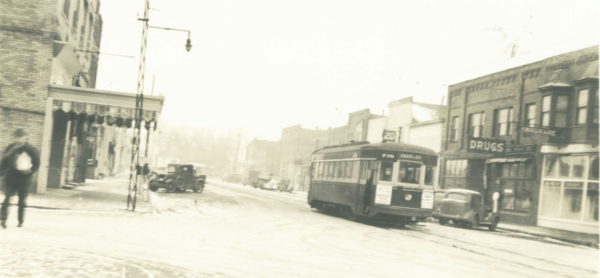Celebrating 125 years of railroads and new roads

The trolley line was extended from Des Moines to Valley Junction in 1898. This picture shows the old trolley running along Fifth Street during the early 20th century. West Des Moines celebrates its 125th anniversary this year. Visit wdm.iowa.gov for a list of events, including the Independence Days Celebration on July 3-4, as well as WDM125Experiences. Visit valley junction.com for another list of activities including the Cinco de Mayo Festival (May 5), Arts Festival (May 20), Mustang Car Show (June 3) and All Iowa Bash (July 3).
By Michael Swanger
When a group of homesteaders including James Cunningham Jordan planted their first crops in 1846 in Walnut Township — the same year Iowa became the 29th state — they sowed the seeds of what would become a historically-significant railroad town named Valley Junction, which blossomed into West Des Moines, one of Iowa’s premier cities.
From its incorporation on Oct. 9, 1893, when Valley Junction’s population was 500 people; to its early railroad years and adoption of its current name on Jan. 1, 1938; to its mid-century housing expansion; to its modern day residential and business boom in which more than 64,000 people now reside there and corporate headquarters as well as retail destinations abound, West Des Moines bears the fruit of the labor of those early settlers and its visionary leaders.
This year marks the city’s 125th anniversary and a variety of events are scheduled to recognize the milestone event. Of late, there has been much to celebrate as West Des Moines has become one of the fastest growing cities in Iowa (10th largest in the state) and several national publications have included it on their lists of best places to live or conduct business thanks to its strong economy and amenities such as quality housing and schools.
“West Des Moines has gone from a small suburban city of Des Moines to a nationally recognized city located in four counties competing for and winning some of the most significant economic development projects in the country (Microsoft’s data centers, Wells Fargo Home Mortgage headquarters, Jordan Creek Town Center, etc.) while also being recognized nationally for a very high quality of life (Money magazine named West Des Moines the 4th best place to live in America among cities with populations from 50,000 to 300,000),” said West Des Moines Mayor Steve Gaer in a written statement. “Finally, the amount of new economic development that has occurred is incredible with the total valuation of new building permits since 2008 of $3.9 billion (2016 was a record year with $1,067,535,149).”
The city’s rapid rise in population and economic growth spurred by aggressive commercial and residential development since the 1990s in Polk, Dallas, Warren and Madison counties is well-documented. However, it might surprise the thousands of newcomers who have flocked to its far western reaches that West Des Moines’ roots run deeper than Jordan Creek Town Center, which bears the name of the city’s most important historical figure.
In short, Valley Junction — now known as Historic Valley Junction — and West Des Moines might not exist as it does today were it not for Jordan’s leadership and the railroad.
TO READ MORE ABOUT THIS STORY AND OTHER FASCINATING STORIES ABOUT IOWA HISTORY, subscribe to Iowa History Journal. You can also purchase back issues at the store.
